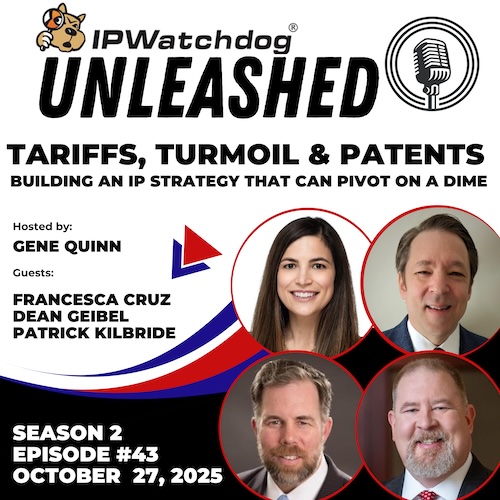“‘[T]he Board did not meaningfully grapple with the ‘039 patent’s additional constraint’ that the memory location is determined by the card information, the CAFC found.”
 Today, the U.S. Court of Appeals for the Federal Circuit (CAFC) issued a nonprecedential ruling in CPC Patent Technologies Pty Ltd. v. ASSA ABLOY AB reversing an obviousness determination by the Patent Trial and Appeal Board (PTAB) over a dissent by Circuit Judge Evan Wallach from the majority’s analysis of the PTAB’s factual findings on prior art disclosures. Although the reversal gives CPC Patent another opportunity to salvage patent claims to biometric card security systems, the CAFC also issued a Rule 36 summary affirmance affirming the invalidity of other claims from the patent-at-issue, while the U.S. Supreme Court denied cert to a CPC Patent petition challenging the CAFC’s Rule 36 practice in separate PTAB appeals.
Today, the U.S. Court of Appeals for the Federal Circuit (CAFC) issued a nonprecedential ruling in CPC Patent Technologies Pty Ltd. v. ASSA ABLOY AB reversing an obviousness determination by the Patent Trial and Appeal Board (PTAB) over a dissent by Circuit Judge Evan Wallach from the majority’s analysis of the PTAB’s factual findings on prior art disclosures. Although the reversal gives CPC Patent another opportunity to salvage patent claims to biometric card security systems, the CAFC also issued a Rule 36 summary affirmance affirming the invalidity of other claims from the patent-at-issue, while the U.S. Supreme Court denied cert to a CPC Patent petition challenging the CAFC’s Rule 36 practice in separate PTAB appeals.
Associating Two Data Sets Does Not Necessarily Establish a Storage Location
Global security manufacturer ASSA ABLOY filed two petitions for inter partes review to challenge claims from CPC Patent’s U.S. Patent No. 8620039, Card Device Security Using Biometrics. Representative claim 1 of the ‘039 patent discloses a method of enrolling in a biometric card pointer system that includes a step by which the method defines a memory location in a local memory external to the card where card information is to be stored, a step which the parties briefed on appeal as the “Defining Limitation.”
In both IPRs, the PTAB construed the Defining Limitation such that “defining” meant “setting” or “establishing,” such that once card and fingerprint information are received, the card information contains the memory address where fingerprint data is stored. Under this construction, the Board determined that prior art reference European Patent No. 924655 (“Hsu”) met the Defining Limitation because it associated fingerprint data with corresponding user numbers, which sufficed to meet the requirement that the card data must define the biometric data’s memory location.
On appeal, the Federal Circuit agreed with CPC Patent that Hsu’s “to associate with” disclosure does not reach what the ‘039 patent’s claims require in setting or establishing the memory location that stores biometric data. The PTAB’s inference that Hsu simultaneously discloses the different actions of “associat[ing]” and “establishing” was problematic, the CAFC found, as associating two sets of data does not necessarily mean that one data set establishes the location of the other. Though Hsu must set a memory location, “the Board did not meaningfully grapple with the ‘039 patent’s additional constraint” that the memory location is determined by the card information, the CAFC found.
This finding by the appellate court undercut ASSA ABLOY’s argument on appeal that the PTAB did not equate “associat[ing]” with “setting” or “establishing” but rather found that the effect of Hsu’s association reached the ‘039 patent’s Defining Limitation. Further, the majority appellate panel of Circuit Judges Sharon Prost and Raymond Chen found testimony from ASSA’s expert witness to be conclusory of the petitioner’s arguments that Hsu disclosed the Defining Limitation. Finding remaining arguments unpersuasive, the Federal Circuit reversed the PTAB’s obviousness determinations and remanded for further consideration of other unpatentability grounds not reached by the Board.
Judge Wallach: Majority’s Analysis Improperly Substitutes PTAB Fact-Finding
In his dissent, Circuit Judge Wallach accused the panel majority of substituting its own findings of fact for those of the PTAB, pointing out two instances where the appellate majority erred in this manner. First, by finding that the effect of Hsu was association and nothing more, Judge Wallach argued that the majority erroneously circumscribed Hsu’s disclosure to the literal meaning of the words contrary to the statutory person of ordinary skill standard, a rigid interpretation that belied the majority’s paraphrasing of the Defining Limitation. Second, Wallach argued that the CAFC majority reduced the testimony from ASSA’s expert to fractions that sound conclusory contrary to the Federal Circuit’s standard of review for substantial evidence.
The Federal Circuit’s ASSA ABLOY ruling was limited to the PTAB’s invalidation of claims 3 through 18 of the ‘039 patent. In a footnote, the CAFC acknowledged that the PTAB’s invalidation of claims 1, 2, 19 and 20 of the ‘039 patent was upheld in a separate ruling also issued today involving consumer electronics giant Apple as IPR petitioner. In that decision, the Federal Circuit issued a Rule 36 one-word summary affirmance of the PTAB’s ruling, which mooted CPC Patent’s appeal as to those claims in ASSA ABLOY.
In a separate blow to CPC Patent’s patent rights, the U.S. Supreme Court today also denied its petition for writ of certiorari to challenge other PTAB invalidations following IPR petitions from Apple. In its petition, CPC Patent was challenging the Federal Circuit’s Rule 36 practice as violating the requirements of 35 U.S.C. § 144, which provides that the Federal Circuit, in taking appeals coming out of the U.S. Patent and Trademark Office, must issue to the USPTO an “opinion” when reviewing agency decisions. In the cases underlying CPC Patent’s petition to the Supreme Court, the CAFC issued Rule 36 affirmances to PTAB rulings invalidating U.S. Patent No. 9269208 and U.S. Patent No. 9665705, both titled Remote Entry System.
Image Source: Deposit Photos
Author: billperry
Image ID: 161261406

![[IPWatchdog Logo]](https://ipwatchdog.com/wp-content/themes/IPWatchdog%20-%202023/assets/images/temp/logo-small@2x.png)

![[Advertisement]](https://ipwatchdog.com/wp-content/uploads/2025/08/LexisNexis-Nov-11-2025-sidebar-700x500-1.jpg)
![[Advertisement]](https://ipwatchdog.com/wp-content/uploads/2025/10/DeepIP-Nov-18-2025-sidebar-700x500-1.jpg)







![[Advertisement]](https://ipwatchdog.com/wp-content/uploads/2021/12/WEBINAR-336-x-280-px.png)
![[Advertisement]](https://ipwatchdog.com/wp-content/uploads/2021/12/Ad-4-The-Invent-Patent-System™.png)







Join the Discussion
No comments yet. Add my comment.
Add Comment